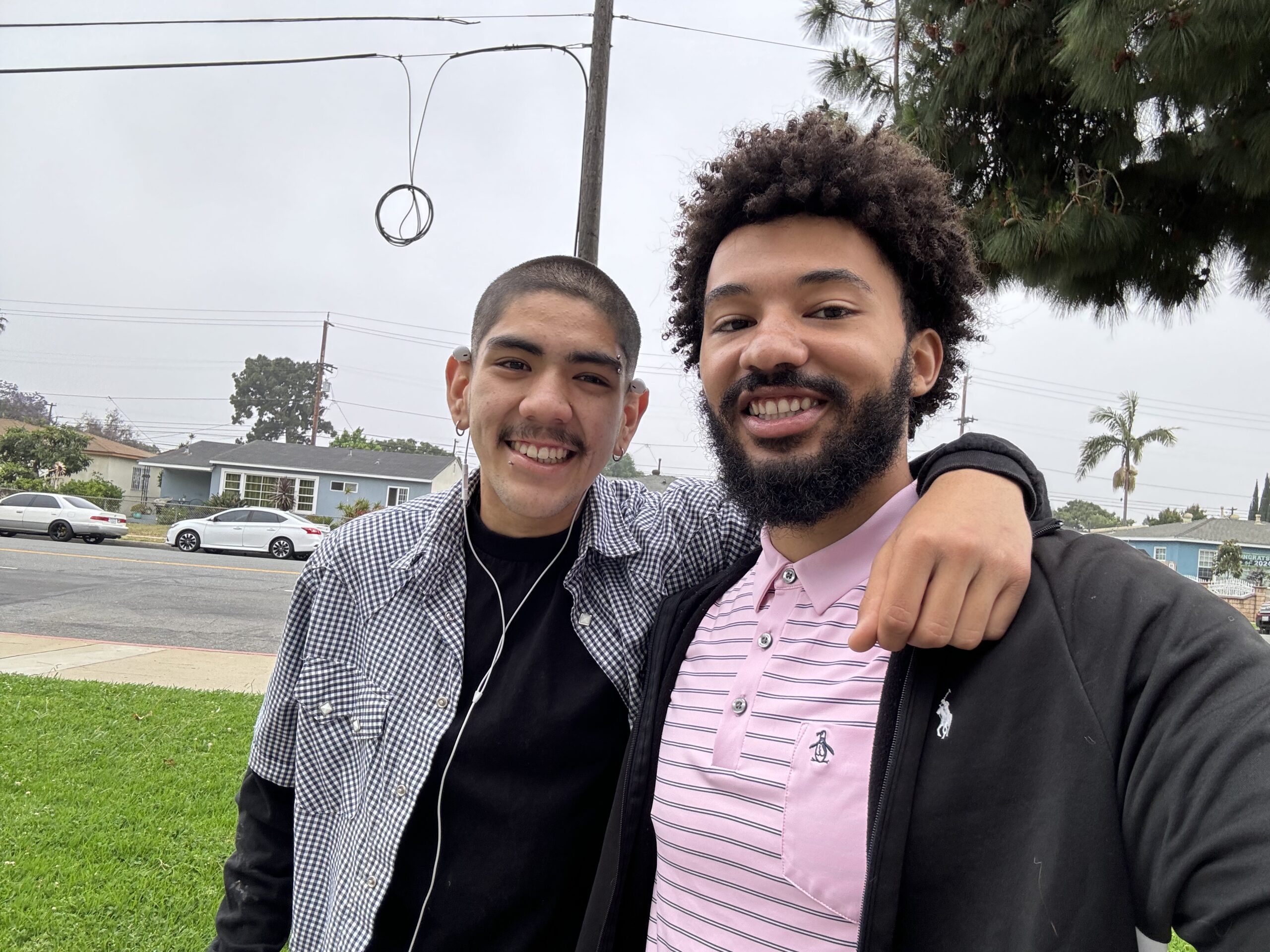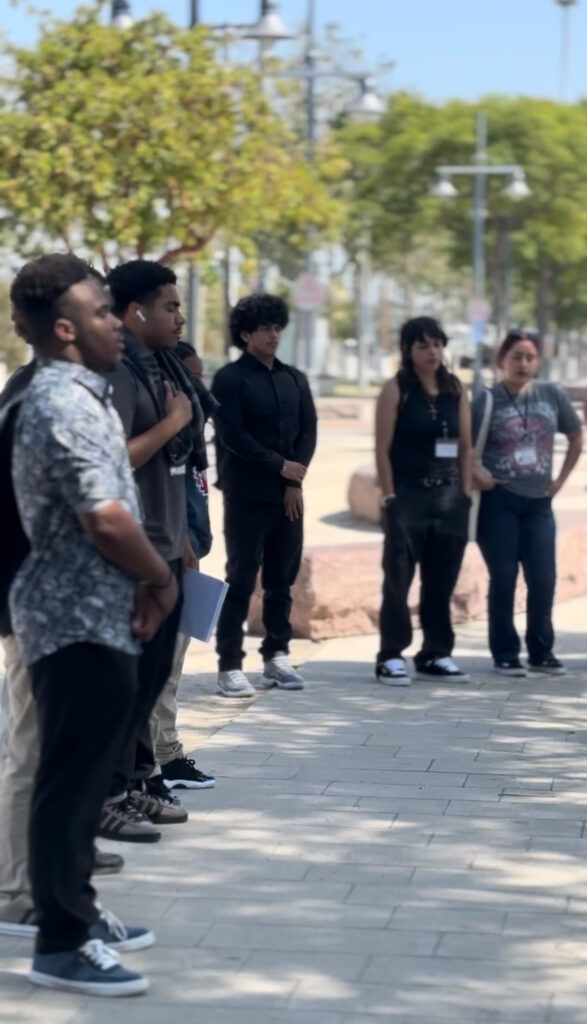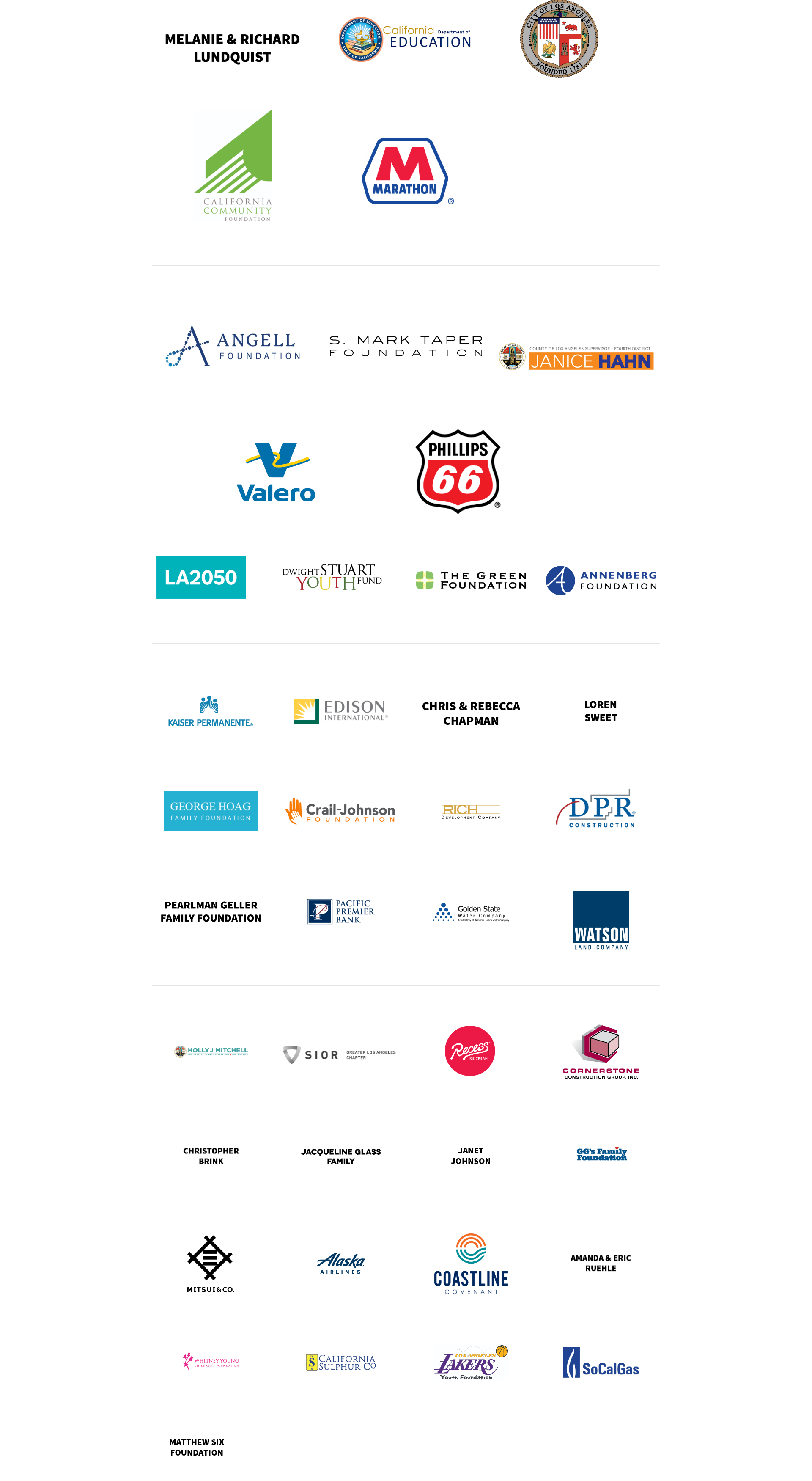
Sharefest Instructor Case Manager Dameane Douglas earned both his BA in Sociology and Master’s in Education at Loyola Marymount University where he also played Division 1 basketball as a student-athlete. With a strong background in interpersonal communication, Dameane has a vision for the role of mindfulness in helping to keep kids in school.
Incorporating mindfulness practices into daily learning experiences has given his students crucial tools to stay in school and control their own inner experience. Dameane has a way of connecting with students, even when they cannot connect with themselves.
Hi, Dameane. Can you tell us a little bit about what “mindfulness” means to you?
To me, mindfulness is simply the ability to be calm, peaceful, and aware through quieting the mind, which normally runs rampant with the struggles and tasks of daily life. Cultivating mindfulness has a direct effect on our brain, heart, central nervous system, and even our reality as a whole.
As a Sharefest Instructor Case Manager, how do you integrate mindfulness into your work with your students?
I’m a certified breathwork instructor and I actively practice mindfulness every day, so one of the best ways I can help my students is to lead by example. I provide them with different ways to practice mindfulness such as guided meditations or deep breathing, and I talk to them about why it is so important to find an activity that you love that brings you into a peaceful, calm state.
Having students keep journals and share in the classroom setting have been crucial parts of the Sharefest curriculum. They know our class is a safe space and they can be vulnerable and talk about what they’re going through. This allows students to not only get in touch with their emotions, but also learn how to express themselves and release things they’ve been holding on to. They’re also able to hear from other students who are dealing with similar things and learn from them.
Why is mindfulness important for Sharefest students in particular?
Many of these students are still dealing with the fall-out from Covid, having spent so much time online and isolated. They’re dealing with social and emotional issues, not to mention the stress and anxiety from their day-to-day lives. Many students have adopted bad habits like being addicted to their phones and technology, which is a form of overstimulation that the pandemic made worse. Mindfulness can help students be more aware of their habits and their overall state of mind more consistently.
What are some of the benefits of mindfulness practices?
Lowering stress is one of the most important things that mindfulness, meditation, and deep breathing can do. Many people understand that when you get stressed or scared, your heart pumps really fast, but it’s not just the heart rate that increases, it’s also the possibility of heart related illnesses like heart attacks. Mindfulness does the opposite of stress. It puts the body, mind, heart, and brain into a calm coherence which sends a signal to the brain to release positive chemicals such as dopamine and serotonin which are connected to feeling happy, peaceful, and calm.

Have you seen mindfulness or meditation make a difference with your students?
I’ve had many students come and tell me that they began practicing meditation on their own at home and that it really helped them calm down or just ground themselves to be able to face life’s challenges. One of my Gardena High School students told me that she began playing music and doing deep breathing and meditation before bed because she was having trouble sleeping. She was practicing it every night to help her sleep, which then allowed her to do better in her classes during the day, which made her feel more confident about herself in general. It was a really positive snowball effect.
Did you ever have a student, or students, rebel against the practice?
I had one class that was totally against meditation. The words meditation and mindfulness were almost like triggers for them. What we learned together as a group, and what they taught me, is that what’s important is simply finding an activity that allows you to get your body into a peaceful state of being. That could be going for a walk, listening to music, drawing, or playing with your dog. It doesn’t matter what activity you choose, all that matters is that you focus on bringing your mind, body, heart, and being into a calm, loving, peaceful state. Then, when you’re faced with challenges, you’ve created a centered, balanced way of being at your core that will remind you that you’re safe, and that everything is going to be okay.
Could you provide a simple mindfulness practice that you would recommend to someone reading this that they may want to use with their own teen as a tool for managing stress?
My personal favorite mindfulness practice is basic deep breathing. This is as simple as it sounds. Find a comfortable position, sitting or lying down, keeping your spine straight. Begin to take slow deep breaths in through the nose and out through the mouth or nose. As you breathe, you will notice that you are able to breathe a bit deeper and slower each time.
After 5 minutes or so you will have expanded your lungs and you’ll be able to take in more oxygen than you normally would be able to. Even if your mind is racing or you catch yourself thinking about what happened earlier in the day or thinking about tomorrow, as long as you focus on your breathing and continue to take deeper, slower breaths, the body will begin to calm down and eventually the mind will follow.
What are positive affirmations and do you like to use them with your students?
An affirmation is essentially a positive declarative statement that supports who you want to be. Affirmations are so important because our body hears the words we speak. Every time we speak we are affirming who we are by what we say about ourselves. I teach our students to become aware of the words they use. Anytime you say ‘I am this’ or ‘I am that’ you are becoming that, you are attracting that. I encourage them to practice positive affirmations — anything you say after “I am.” For example, I am powerful, I am loved, I am worthy, I am smart, I am more than capable of doing anything I put my mind to.
Should mindfulness practices be used in every school?
Students especially need mindfulness because many are dealing with childhood trauma, lack of self-esteem, and emotional and mental issues. They’re stressed, overstimulated, and in a perpetual state of fight or flight. It’s very challenging for youth to truly calm down and be peaceful. Add to that the social dynamic of dealing with their emotions, creating relationships, and figuring out who they are. Mindfulness is an incredible tool for youth, because it shows them that they have control over their inner experience. They can create chaos or they can create peace. When students begin to experience that for themselves, that’s a game changer.
###
About Sharefest:
Sharefest builds hope and pathways to economic success for youth facing significant barriers. Serving over 300 youth a year, their primary work takes place inside LAUSD Continuation High Schools from Wilmington to Watts. Sharefest students participate in college and career courses that accelerate earning the credits they desperately need to graduate. The Sharefest team mentors and provides students with the necessary skills, support, and connections to achieve their career and college goals. After high school graduation, youth continue to receive support, guidance, and mentoring as they enter into the workforce or community college. Sharefest’s work with youth is partially funded by facilitating service projects for area businesses that want to give back to their surrounding communities.
THANK YOU TO OUR CAREER CONNECTIONS PARTNERS


